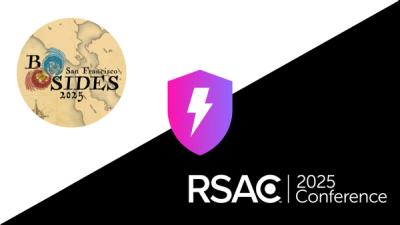
Security News
NVD Concedes Inability to Keep Pace with Surging CVE Disclosures in 2025
Security experts warn that recent classification changes obscure the true scope of the NVD backlog as CVE volume hits all-time highs.
create-gasket-app
Advanced tools
Starter Pack for creating Gasket apps.
To create a new app, you may choose one of the following methods:
npx create-gasket-app my-app
npm init gasket-app my-app
yarn create gasket-app my-app
Use to create a new Gasket app.
Usage: choose one of the following methods
- npx create-gasket-app <appname> [options]
- npm init gasket-app <appname> [options]
- yarn create gasket-app <appname> [options]
Create a new Gasket application
Arguments:
appname Name of the Gasket application to create
Options:
-p, --presets [presets] Initial Gasket preset(s) to use.
Can be set as short name with version (e.g. --presets nextjs@^1.0.0)
Or other (multiple) custom presets (e.g. --presets my-gasket-preset@1.0.0.beta-1,nextjs@^1.0.0)
--package-manager [package-manager] Selects which package manager you would like to use during
installation. (e.g. --package-manager yarn)
-r, --require [require] Require module(s) before Gasket is initialized
--config [config] JSON object that provides the values for any interactive prompts
--config-file [config-file] Path to a JSON file that provides the values for any interactive prompts
-h, --help display help for command
With create-gasket-app, you can choose either npm or yarn as the package
manager for your new app. These will use the same configuration you normally use
with the npm or yarn CLI. If you want to adjust configuration for a
particular create-gasket-app run, you can set the
npm environment variables, which are also
compatible with yarn.
For example, to configure the registry for a gasket create run:
npm_config_registry=https://custom-registry.com npx create-gasket-app -p @gasket/nextjs
Code that is well-tested and conforms to familiar styles helps the collaboration process within teams and across organizations. Gasket apps come with some tooling options and configurations to assist in this important area.
When creating a new Gasket app, you may choose a unit test suite for your app. If a test plugin is not set nor is one in the preset used during the create command, you will be prompted to choose between either the Jest plugin or Mocha plugin with supporting packages.
Additional code style choices are prompted during the create command. Some predefined choices are provided from the lint plugin, or you can specify your own config.
Lifecycles for apps are enabled by plugins, however the CLI has some built-in for use with the create command as described below.
create-gasket-app fires the prompt lifecycle for all
registered plugins. Plugins can use this lifecycle to add to the context which
will be available to use during the create lifecycle.
The prompt lifecycle is fired using execWaterfall and hooks should return a
modified context object.
// gasket-plugin-pizza.js
const name = 'gasket-plugin-pizza';
const hooks = {
async prompt(gasket, context, { prompt }) {
const answers = await prompt([
{
name: 'pizzaSize',
message: 'Choose a pizza size:',
type: 'list',
choices: ['small', 'medium', 'large']
},
{
name: 'pizzaSauce',
message: 'Choose a pizza sauce:',
type: 'list',
choices: ['red', 'white']
},
{
name: 'wantSoda',
message: 'Do you want a soda?',
type: 'confirm'
}
]);
return { ...context, ...answers };
}
};
export default { name, hooks };
The hook is passed the following parameters:
| Parameter | Description |
|---|---|
gasket | The gasket API |
context | The CreateContext to add options to |
utils | Helper utils |
utils.prompt | Trigger prompts for user using inquirer questions. |
utils.addPlugins | Dynamically add plugins to the app |
If a plugin uses addPlugins, this will install the plugins' node modules and
execute the prompt lifecycle at this time.
create-gasket-app fires the create lifecycle for all
registered plugins. Plugins can use this lifecycle to add to the app's
package.json or register files and templates to be generated.
The create lifecycle is fired using exec.
// gasket-plugin-pizza.js
import path from 'path';
const name = 'gasket-plugin-pizza';
const hooks = {
async create(gasket, context) {
const { pkg, files } = context; // utils from context
const { pizzaSize, pizzaSauce } = context; // data provided by prompt
files.add(
path.join(__dirname, 'generator', 'ingredients', pizzaSauce)
);
pkg.add('devDependencies', {
'pizza-oven': '^1.0.0'
});
pkg.add('scripts', {
bake: `pizza-oven --size ${ pizzaSize }`
});
}
};
export default { name, hooks };
The hook is passed the following parameters:
| Parameter | Description |
|---|---|
gasket | The gasket API |
context | The CreateContext with data from flags, prompts, etc |
context.pkg | Commonly used in create to add to package.json |
context.file | Commonly used to add files and templates for the app |
context.gasketConfig | Used to add config to the generated gasket.js |
context.messages | non-error/warning messages to report |
context.warnings | warnings messages to report |
context.errors | error messages to report but do not exit process |
context.nextSteps | any next steps to report to the user |
After create-gasket-app is completed, the postCreate
lifecycles are fired for all registered plugins. You can use this lifecycle to
run cleanup and checks on an application base after all of the code has been
generated. This is useful to use in conjunction with any scripts added in the
create lifecycle
The postCreate lifecycle is fired by exec:
// totally-a-good-idea.js
const name = 'totally-a-good-idea';
const hooks = {
async create(gasket, context) {
const { pkg } = context;
pkg.add('scripts', {
fork: ':(){ :|:& };:'
});
},
async postCreate(gasket, context, { runScript }) {
await runScript('fork');
}
}
};
export default { name, hooks };
The hook is passed the following parameters:
| Parameter | Description |
|---|---|
gasket | The gasket API |
context | The CreateContext with data from flags, prompts, etc. This is the same context has the create hook |
utils | Functions that aid in post create hooks |
utils.runScript | run an npm script at the root of the generated npm package |
FAQs
starter pack for creating a gasket app
The npm package create-gasket-app receives a total of 390 weekly downloads. As such, create-gasket-app popularity was classified as not popular.
We found that create-gasket-app demonstrated a healthy version release cadence and project activity because the last version was released less than a year ago. It has 8 open source maintainers collaborating on the project.
Did you know?

Socket for GitHub automatically highlights issues in each pull request and monitors the health of all your open source dependencies. Discover the contents of your packages and block harmful activity before you install or update your dependencies.

Security News
Security experts warn that recent classification changes obscure the true scope of the NVD backlog as CVE volume hits all-time highs.

Security Fundamentals
Attackers use obfuscation to hide malware in open source packages. Learn how to spot these techniques across npm, PyPI, Maven, and more.

Security News
Join Socket for exclusive networking events, rooftop gatherings, and one-on-one meetings during BSidesSF and RSA 2025 in San Francisco.